Victoria Minyazova, Driver, Russia
 Despite our technological advancement and the fact that people have been chasing success, money wealth altogether, there are still places in the world where time has practically stopped. People here live a life without stress, are close to each other and their lives calmly flow by without any real obstacles. Victoria Minyazova visited such a place, a village called Novaya Utka, where she tried to capture the local atmosphere and the lingering countryside lifestyle. The resulting images speak for themselves and take us on a journey into time that many of us have already forgotten, and some of us have never even experienced. (WoL)
Despite our technological advancement and the fact that people have been chasing success, money wealth altogether, there are still places in the world where time has practically stopped. People here live a life without stress, are close to each other and their lives calmly flow by without any real obstacles. Victoria Minyazova visited such a place, a village called Novaya Utka, where she tried to capture the local atmosphere and the lingering countryside lifestyle. The resulting images speak for themselves and take us on a journey into time that many of us have already forgotten, and some of us have never even experienced. (WoL)
“I closed my eyes and pointed blindly to some place on the map. It turned out to be Novaya Utka village.”
 Every year I try to visit at least 2 villages or regional towns in order to document its vanishing rural way of life, because life in these remote places is gradually changing, slowly abandoning the countryside lifestyle. Some villages almost completely switched to the city lifestyle, people don’t farm anymore and rarely work on their vegetable gardens, even though the place where they live is rather far from the city. I prefer going there in autumn, when the nature is so rich and varied and the sky is just fabulous.
Every year I try to visit at least 2 villages or regional towns in order to document its vanishing rural way of life, because life in these remote places is gradually changing, slowly abandoning the countryside lifestyle. Some villages almost completely switched to the city lifestyle, people don’t farm anymore and rarely work on their vegetable gardens, even though the place where they live is rather far from the city. I prefer going there in autumn, when the nature is so rich and varied and the sky is just fabulous.
At the beginning, I was a bit confused what direction to take, east, north, west or south. I found an easy decision. I closed my eyes and pointed blindly to some place on the map. It turned out to be Novaya Utka village.
This village is quite big. It was founded in 1749 on the bank of the Utka river, which is the left feeder of the Chusovaya river. There, an iron-smelting and ironworks plant was built, called Utkinskiy state plant. The enterprise was funded by the government, but later in 1758 it was purchased by an entrepreneur Yaguzhinskiy, and in 1778 he sold the enterprise to Savva Yakovlev.
From then on, the plant together with the village had been called Utka Yakovleva.
After the revolution in the 20-s of the XXth century the place received a new name Novoutkinsk or Novaya Utka. Why Novaya (New)? Because there was one older plant by the Utka river, which was built much earlier than that one. In order not to confuse these two plants they were called after the surnames of their owners – Utka Demidova (or after the revolution Staroutkinsk, which is situated about 325 km upstream) and Utka Yakovleva (or Novoutkinsk after the revolution).
“Usually it is the older generations that stay in the village, but here, I saw a lot of young people as well as children.”
The day when I set off to the village was cloudy but with beautiful autumn sky and approaching the place it started raining which I didn’t expect at all. At first I began wondering how I can shoot without a raincoat and without a camera cover, but luckily it stopped raining when we reached our destination. It was the nearest town to the village, Pervouralsk, which turned out to be deserted and the road which according to our map should have lead to the village was closed. Once again, we were lost. After a while we saw a local car and decided to follow it. The “road” was through the forest, which was basically just mud and tree roots with stones after the rain and our journey turned into somewhat of an off-road experience. Finally, we got out of the forest and asked locals for directions. The road we were shown ran through a beautiful coniferous forest.
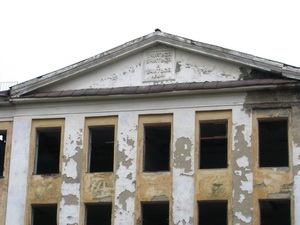 |
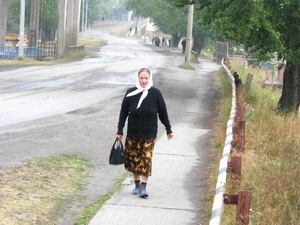 |
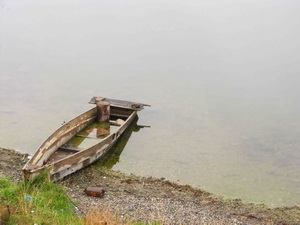 |
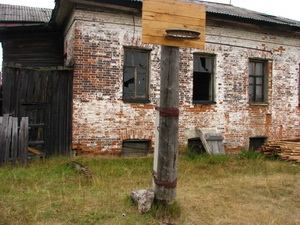 |
After two hours we reached Novaya Utka village.
Making our way into the village, the first thing that struck our eyes was the construction of a church, that was being done not only by builders but also nuns and the congregation. I think it is going to be a beautiful church. We left the car right next to the building area.
 The air was clean and a mist lay above the fields as a result of the previous rain.
The air was clean and a mist lay above the fields as a result of the previous rain.
The locals were rather curios about our shooting. We expected it to be an unfriendly gesture but it turned out to be the opposite. Usually it is the older generations that stay in the village, but here, I saw a lot of young people as well as children, meaning the future of this village is quite promising.
The village is really a fabulous place with a wide twisting river and generous fields. The old buildings are gone, only the houses of Soviet time constitute the architecture of the place. Almost every homestead has cows, goats, chickens and cocks. Many of them freely walk around the village. The firewood, stored up for the winter, is in stacks. The village is big and really beautiful but we weren’t able to see it entirely. During autumn, it gets dark early, so we had to leave before nightfall.
It started drizzling but at that time, we were already in the car making a long journey back home, listening to music by The Beatles and Visotskiy.
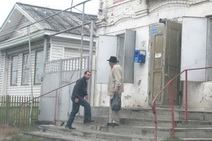 |
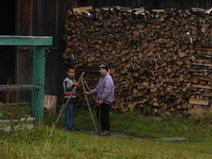 |
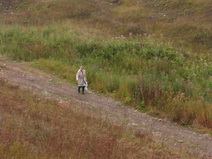 |
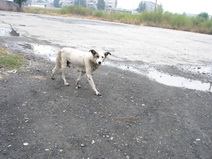 |
 |
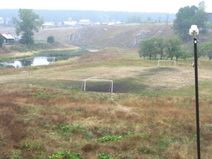 |
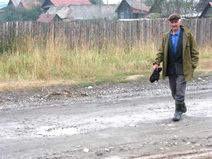 |
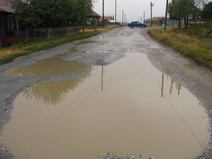 |
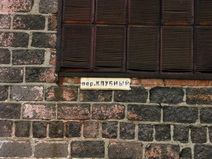 |
